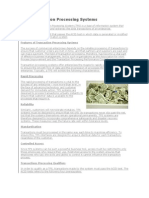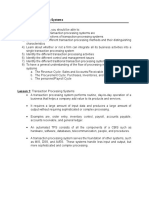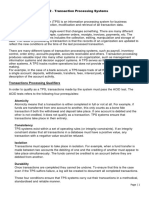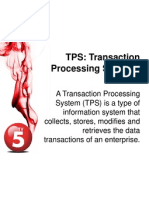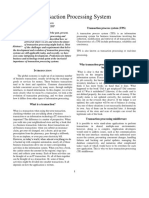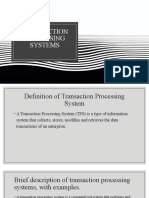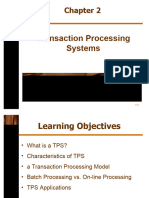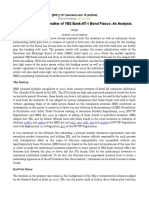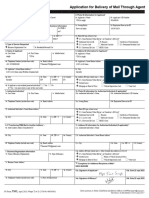0% found this document useful (0 votes)
690 views3 pagesTransaction Processing System
The document discusses transaction processing systems (TPS). It defines a TPS as a system that manages business transactions and records them in a database. A TPS processes simple, repetitive transactions like ATM withdrawals, online payments, and trading stocks. It captures transaction data, validates the data, processes the transactions, and maintains the database by updating it with the results. A TPS is essential for conducting business as it brings transaction data into an organization's databases to support decision-making.
Uploaded by
Agrippa MungaziCopyright
© © All Rights Reserved
We take content rights seriously. If you suspect this is your content, claim it here.
Available Formats
Download as DOCX, PDF, TXT or read online on Scribd
0% found this document useful (0 votes)
690 views3 pagesTransaction Processing System
The document discusses transaction processing systems (TPS). It defines a TPS as a system that manages business transactions and records them in a database. A TPS processes simple, repetitive transactions like ATM withdrawals, online payments, and trading stocks. It captures transaction data, validates the data, processes the transactions, and maintains the database by updating it with the results. A TPS is essential for conducting business as it brings transaction data into an organization's databases to support decision-making.
Uploaded by
Agrippa MungaziCopyright
© © All Rights Reserved
We take content rights seriously. If you suspect this is your content, claim it here.
Available Formats
Download as DOCX, PDF, TXT or read online on Scribd
/ 3



















